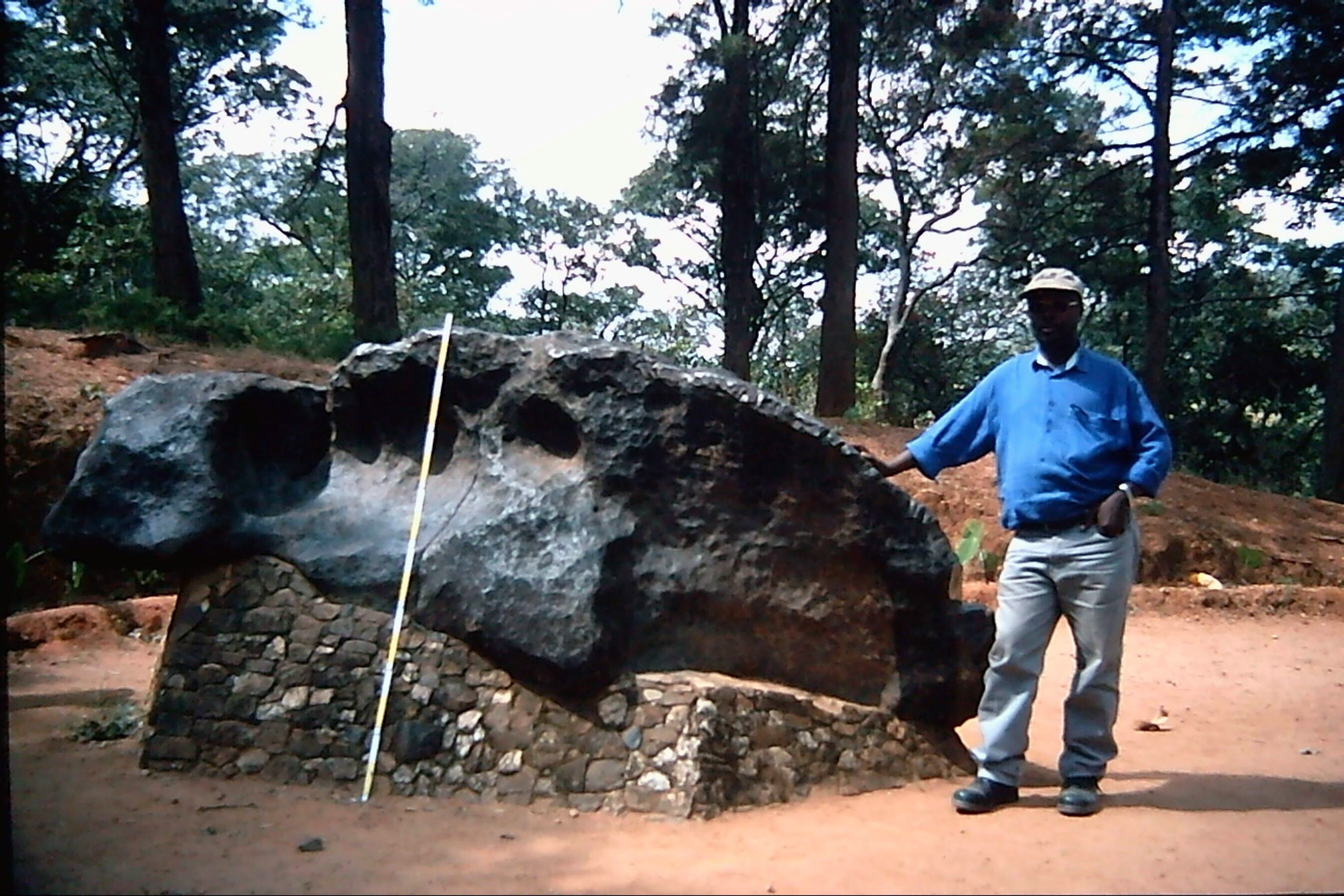Mbozi Meteorite on:
[Wikipedia]
[Google]
[Amazon]
 Mbozi is an ungrouped
Mbozi is an ungrouped
Seven Most Massive Single Meteorite Fragments on Earth
Largest meteorites
Images
 Mbozi is an ungrouped
Mbozi is an ungrouped iron meteorite
Iron meteorites, also known as siderites, or ferrous meteorites, are a type of meteorite that consist overwhelmingly of an iron–nickel alloy known as meteoric iron that usually consists of two mineral phases: kamacite and taenite. Most iron met ...
found in Tanzania
Tanzania (; ), officially the United Republic of Tanzania ( sw, Jamhuri ya Muungano wa Tanzania), is a country in East Africa within the African Great Lakes region. It borders Uganda to the north; Kenya to the northeast; Comoro Islands and ...
. It is one of the world's largest meteorite
A meteorite is a solid piece of debris from an object, such as a comet, asteroid, or meteoroid, that originates in outer space and survives its passage through the atmosphere to reach the surface of a planet or Natural satellite, moon. When the ...
s, variously estimated as the fourth-largest to the eighth-largest, it is located near the city of Mbeya in Tanzania's southern highlands. The meteorite is long, high, and weighs an estimated .
Discovery and naming
Mbozi has been long known to locals, who call it ''kimondo'', yet became known to outsiders only in the 1930s. It is named afterMbozi District
Mbozi District is a district in Songwe Region, Tanzania. It is bordered to the north by Chunya District, to the east by Mbeya Urban and Ileje Districts, to the south by Zambia and to the west by Rukwa Region.
According to the 2002 Tanzania Natio ...
, in Mbeya (Tanzania
Tanzania (; ), officially the United Republic of Tanzania ( sw, Jamhuri ya Muungano wa Tanzania), is a country in East Africa within the African Great Lakes region. It borders Uganda to the north; Kenya to the northeast; Comoro Islands and ...
). When it was discovered by scientists in 1930 it didn't have a crater.Mineralogy
Mbozi consists of meteoric iron with smallsilicate
In chemistry, a silicate is any member of a family of polyatomic anions consisting of silicon and oxygen, usually with the general formula , where . The family includes orthosilicate (), metasilicate (), and pyrosilicate (, ). The name is al ...
inclusions. The meteoric iron has a nickel concentration of 8% and shows Widmanstätten pattern. The Germanium
Germanium is a chemical element with the symbol Ge and atomic number 32. It is lustrous, hard-brittle, grayish-white and similar in appearance to silicon. It is a metalloid in the carbon group that is chemically similar to its group neighbors s ...
-Gallium
Gallium is a chemical element with the symbol Ga and atomic number 31. Discovered by French chemist Paul-Émile Lecoq de Boisbaudran in 1875, Gallium is in group 13 of the periodic table and is similar to the other metals of the group (aluminiu ...
ratio is larger than 10, which can also be seen in meteorites of the IIF iron meteorite group and the Eagle station pallasite
The pallasites are a class of stony–iron meteorite.
Structure and composition
It consists of centimetre-sized olivine crystals of peridot quality in an iron-nickel matrix. Coarser metal areas develop Widmanstätten patterns upon etching. Mino ...
s.
The silicate
In chemistry, a silicate is any member of a family of polyatomic anions consisting of silicon and oxygen, usually with the general formula , where . The family includes orthosilicate (), metasilicate (), and pyrosilicate (, ). The name is al ...
inclusions have a core and mantle structure in thin section. The mantle is made from glass, that partially devitrified into pyroxene
The pyroxenes (commonly abbreviated to ''Px'') are a group of important rock-forming inosilicate minerals found in many igneous and metamorphic rocks. Pyroxenes have the general formula , where X represents calcium (Ca), sodium (Na), iron (Fe II) ...
and plagioclase. The core consists of quartz.
Classification
Currently classified as an ungroupediron meteorite
Iron meteorites, also known as siderites, or ferrous meteorites, are a type of meteorite that consist overwhelmingly of an iron–nickel alloy known as meteoric iron that usually consists of two mineral phases: kamacite and taenite. Most iron met ...
Mbozi shows similarities with IIF iron meteorites, the Eagle station pallasite
The pallasites are a class of stony–iron meteorite.
Structure and composition
It consists of centimetre-sized olivine crystals of peridot quality in an iron-nickel matrix. Coarser metal areas develop Widmanstätten patterns upon etching. Mino ...
s and a few other ungrouped iron meteorite (e.g. Bocaiuva meteorite).
See also
* Glossary of meteoriticsExternal links
Largest meteorites
Images
References
{{Meteorites by name Meteorites found in Tanzania